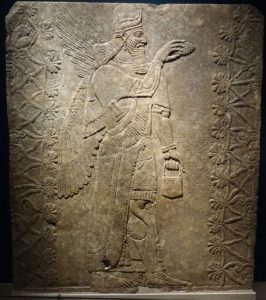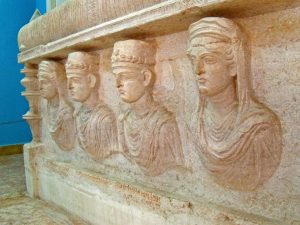Syrian Renaissance Plan
Reconstructing Syria After Its Devastation by War and Destruction



Proposed by
Paul E. Vallely MG US Army (Ret)
Chairman Stand Up America, Legacy National
Security Advisory Group and Syrian Liaison Group
- Syria Statistics after 6 years of war: 470,000 dead; 1+ million injured; 11.3 million driven out of their homes. According to UNICEF – 8.4 Million, more than 80% of Syria’s child population, have been seriously affected, whether in Syria or as refugees. Tens of thousands of children have died.
- The most important element of this plan is to create the first Safe Zones for returning refugees and displaced citizens from within, from such places as Aleppo and throughout the devastated regions of the country.
- Infrastructure for the entire Syrian Renaissance must be identified in outline, even though the time horizon for the infrastructure is much longer term and the scope of creation much farther and broader reaching to eventually encompass the entire nation.
- Vital infrastructure will include: roads, electrical, solar, digital, ports, bridges, airports, water, desalinization, dry-land agriculture, transportation and so much more. Consider the mobile grid and its relation to the internet, for example. There are many new technologies available to leap frog aging platforms to embrace the new. This vision points toward a new Syria that rises to fulfill the full potential of the nation in its glorious history, of the wonderful people in all their diversity of religion and culture. The term “Renaissance” (rebirth) is in NO way exaggerated.
- BUT FIRST: The safe return of the dispersed refugees in their millions, as well as the displaced and hopeless due to the devastating war, must be facilitated, and the overwhelming process of making them whole for the short term must be faced and accomplished.
- A large Re-entry Assessment Facility will be necessary to process returning Syrian refugees. Assuming the refugees will be entering through the Syrian Mediterranean ports, busing may be required to a central facility where a thorough questioning, identification and clearing of individuals and family’s needs to take place.
- Very importantly, within the facility, medical assessments must occur, requiring nurses, nurse practitioners and doctors on site. According to the Save the Children Report on Syria 2014, measles, meningitis and polio are on the rise with as many as 80,000 Syrian children who may be carriers.
- At least one-third of children under 5 have not received their vaccinations. Every child, age 15 years and under must be issued vaccination booklets detailing vaccinations needed, given with dates. Parents will keep these booklets safe and bring them to doctor visits. The information should be electronically maintained in hospitals/clinics, as well.
- Malnutrition and resulting medical issues need to be identified. Many adults and children may be suffering from skin conditions.
- It has been shown in refugee camps in Lebanon that disbursement of Vaseline (petroleum jelly) by volunteer medical professionals through donations by the Vaseline company, have been successful in mitigating many skin conditions presented. Disbursement of this simple emollient at the re-entry facility would be beneficial. Tuberculosis diagnosis and treatment and other contagious medical issues, possibly requiring the implementation of quarantine protocols, must be immediately addressed.
- Vouchers for food and clothing, packages of personal hygiene sundries, small cash disbursements, etc. should be distributed at the assessment center.
- All information must be electronically preserved.
- Once this initial process is underway, the most important part of the plan will be the Safe Zones which MUST be created. A commitment to the nation, its sovereignty, the safety of its citizens within their own country, and to their future as proud, productive citizens must be expressed in transformational action.
- This is equally important for the stabilization of the region as it is for the security of other places such as Europe, currently bearing a load of human need vastly beyond their means to serve, let alone to secure. The entire world needs to see that the War has ended, a plan has commenced and that a future can be envisioned.
- Following processing, a destination is required. The first step is to identify areas for mixed-used development – outside Latakia and Tartous on the Mediterranean in Western Syria would be ideal initial locations.
- Bus will be the main mode of transportation for returning refugees. Ideally, travel will be restricted, for the protection of the people. T ravel between the resettlement communities and Latakia, in the north, and Tartous, in the south, should be sufficient range for the people to move around and possibly find work. Obviously, a bus terminal may need to be constructed and possibly, temporary bus passes issued to those seeking work.
- Housing, daily life supply, education, work, recreation and worship, all must be addressed as quickly as possible. It is not enough to house the body, or even provide safety and physical security. Productivity is every bit as important for the health and wellbeing of both individual and community.
- The mixed-use community model employed calls for businesses to also be created so that inhabitants may find work and income as well as enjoy daily life activities. These must run the gamut from local eateries and other such retail and support services, to more advanced businesses and light manufacturing.
- The modern term, “mixed-use development communities,” refers to the historic pattern of human settlements in their natural condition. Residential (apartments, townhouses, individual homes) industrial, institutional (schools, hospitals, places of worship), shopping, entertainment areas (parks, soccer fields, playgrounds) are combined within walking distance for ease and cost reduction/profit enhancement. Many of these communities are also bicycle friendly. This type of development would be well suited for returning refugees because it provides for most human needs in one place, fosters a sense of community and connection to others. For example: laundromats where women may congregate with attached playrooms for the youngest children would contribute to the well-being of the family in several important ways.
- Eco-friendly beehive homes are found across the Syrian landscape and have been keeping desert families cool for centuries. However, beehive dwellings have dark interiors due to a lack of windows. A small opening at the very top of the dwelling which allows heat and smoke to escape provides very little light.
- There is a modern building process called rammed earth that is economical, allows for windows, can be used in at least 2 story construction, does not need to be painted, the materials utilized for interior and exterior walls are available locally and it is a visually beautiful product. Electricity and plumbing fittings can be readily placed within the walls. And upon completion this modern, natural housing would be environmentally attractive, physically comfortable and comforting to a traumatized people.
- Another option is modified (windows and standard housing doors added) shipping containers. With the initial re-settlements being on the coast and near Syria’s main shipping ports, containers may be a very practical form of housing as well. Containers will need to be cleaned and painted, adding to the cost, but they are weather resistant. Desert rooftop cooling systems, such as those used on desert military bases, would be necessary. Their maintenance is low cost with minimal tools required. Containers are readily stackable using cranes and can easily be used to create more than satisfactory apartments or even individual homes.
- Wooden shipping pallets are easily turned into tables and benches for interiors. With waterproof camping pads (which are also insect resistant) placed on top and a blanket they may be used as sleeping pallets.
- Manufacturing buildings are of importance for the people to engage in development and productivity at earliest moment possible.
- Along with the economic activity, a plan must be put in place to secure property rights for all inhabitants, so that the power of capitalism can be unleashed, and growth, further development and restoration of culture can root and take off on its own.
- Going beyond robust property rights, low taxation for stable collection and the responsible creation of local government is critical. Corruption must be, if not abolished, discouraged aggressively. Public safety policing is necessary, and must be led by refugees themselves for integrity and acceptance. Even when the number of such restorative communities is small, it will set a new tone for the future of the nation more broadly. This combination of robust property rights, low and fair taxation and the stabilization of a growing economy create the basis for a stable, high value currency broadly throughout the nation.
- For any of these economic directions to be viable, training and re-training will be critical. Economic and technical training facilities to provide for this need will be constructed as soon as housing has been provided and the first people arrive.
- Shipping containers that have been cleaned and modified with windows and doors and swamp coolers can be used, at least initially, for school classrooms. One-half of the 4.8 million registered refugees are children. Presently 5 out of 10 children are out of school. That number may be even higher among the returning refugees as education has not held the priority that it normally has in Syrian life. Enrollment in schools outside of Syria often requires legal registered status and school fees, books/materials are certainly tertiary to the obvious priorities of housing and food. Also, many older children have had to find employment to add to their families’ incomes, meager as they are. In neighboring countries and in Europe, even living in tents often requires fees to be paid.
- Clearly this is an enormous problem for Syria as the refugees arrive home. Schools have been damaged in the bombings. In the coastal area, where the refugees will locate until the country is safe for them to travel to their home cities, or possibly remain and establish themselves, thousands of children will need to be educated. If the children’s educations are neglected, Syria will be dealing with an uneducated populace in the future, from which many more serious problems would arise. To avoid that pitfall, children need to be in school until 14 years of age, minimum. Of course, Syrian parents, most of whom value education highly, would prefer their children to complete high school and move on to higher education.
- Vocational schools for older students and for re-training adults are highly recommended. Skilled workmen will be needed to rebuild Syria and move it forward, eventually into the 21st century.
- An early business that will be needed, for efficient supply, is an Amazon-style distribution center, allowing a leapfrog to modern logistics and online access, as well as efficient delivery. This one business alone will be a model for other communities and for the entire nation as it reverts from a state of war to a state of peace and looks toward the future.
- That vision, the vision of a new Syria arising, rebuilt and restored, will be rooted in the minds and hearts of the people, and will rapidly spread throughout the nation as source of hope and optimism.






